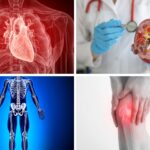Fuel Your Metabolism with the Right Breakfast

Which Breakfast is Best?
Breakfast is known as the most important meal of the day.
But when starchy bagels, sugary donuts, and fruit juice dominate the table, it’s safe to say that breakfast has become less an “important” meal and more an “indulgent” one. “Breakfast” itself may not be important (the benefits of intermittent fasting are well established), but what we eat for the first meal of the day definitely is.
Notable studies and papers published over the last twenty years have shown the positive impacts of eating lower carbohydrate and low-glycemic load (GL) breakfasts versus high carbohydrate and high GL breakfasts [1,2].
The glycemic index is a measure of how quickly a food raises blood sugar levels. Foods with a high glycemic index cause a rapid spike in blood sugar, followed by a rapid drop, while low-glycemic load foods lead to a slower, more gradual increase and decrease in blood sugar. Because insulin is required to regulate blood sugar, a spike in blood glucose leads to a spike in insulin. The constant presence of a hormone can lead the body to become resistant to it, which is a significant concern when it comes to insulin, as insulin resistance is associated with a host of health problems [3].
In one particular study, researchers investigated the impact of various glycemic load breakfasts on different hormones, including insulin [4]. Participants were divided into three groups, each receiving a different isocaloric breakfast (same number of calories):
- Instant Oatmeal: High glycemic load meal, consisting of 64% carbohydrates, 20% fat, and 16% protein
- Slow Cooked Oatmeal: Moderate glycemic load, also consisting of 64% carbs, 20% fat, 16% protein
- Vegetable Omelet: Low glycemic load, consisting of 40% carbs, 30% fat, 30% protein
After the breakfasts, researchers measured hormone responses and metabolic fuel concentrations for the following five hours. They fed the participants the same meal for lunch and then monitored their remaining food intake for the day.
Insulin predictably rose more on the higher GL meals and glucagon levels were suppressed, among other hormonal impacts. Additionally, with no restrictions on the rest of their food, participants who ate the high-GL lunch consumed 600 to 700 more calories throughout the day. This finding is consistent in similar trials [5].
Additionally, variations of this same study have looked at factors such as satiety and hunger and have produced similarly compelling findings [6]. Individuals who consume the low-GL omelet meal report feeling more satisfied and less hungry throughout the morning compared to those who have moderate or high-GL meals. Additionally, the egg breakfast group shows lower levels of ghrelin, a hormone associated with hunger.
Studies such as these contribute to the growing body of research emphasizing the benefits of eating foods rich in protein and healthy fats. It’s increasingly clear that such meals could lead to improved hormones, regulated blood sugar, increased satiety, and reduced calorie intake compared to breakfasts higher in carbohydrates and sugars.
If you’re looking to start your day off right, the solution is clear: skip the processed foods and stick with protein, healthy fats, and low-glycemic fruits and vegetables.
References
- https://www.ncbi.nlm.nih.gov/pmc/articles/PMC10475871/
- https://www.sciencedirect.com/science/article/abs/pii/S0002916523488909
- https://www.ncbi.nlm.nih.gov/books/NBK507839/
- https://pubmed.ncbi.nlm.nih.gov/10049982/
- https://pubmed.ncbi.nlm.nih.gov/10721888/
- https://pubmed.ncbi.nlm.nih.gov/23803881/
This article is for informational and educational purposes only. It is not, nor is it intended to be substitute for professional medical advice, diagnosis, or treatment and should never be relied upon for specific medical advice.

















